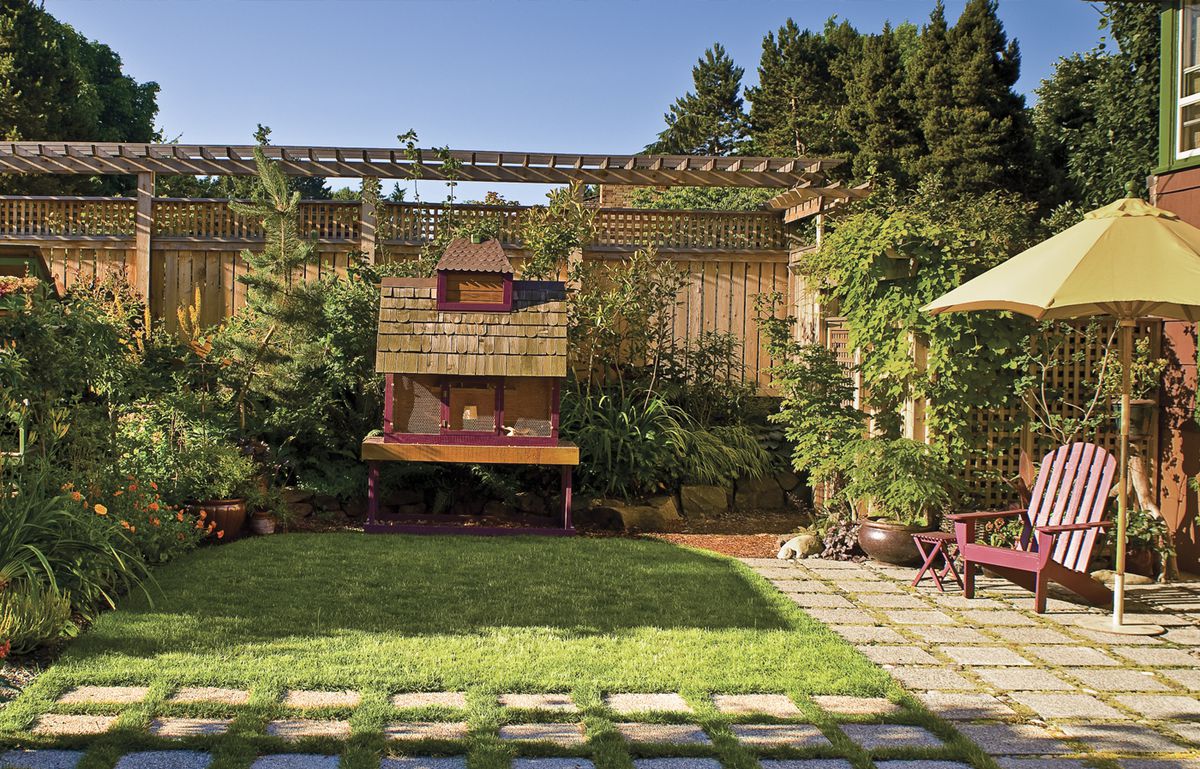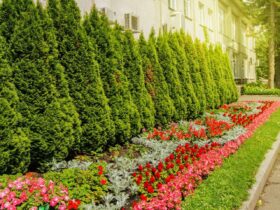Introduction
With the effects of climate change more apparent than ever, it’s important to reduce the use of resources and make your backyard more sustainable. You can search for “landscape companies near me” and hire professionals to execute your vision of a sustainable backyard. Let’s check out a few sustainable backyard ideas you can implement right now.
The Ideas
- Natives – Planting natives has gained a lot of traction in recent years and it’s not just a new trend or hype. You may think that non-native plants are equally good for the environment, but that could not be further from the truth. Native plants have evolved along with the local geography and adapted to the changing terrain, soil, and weather. All that’s done without any human intervention and that’s what’s important.
So when you plant natives in your backyard, they can grow without your help and without feeding on fertilizers. They are also adapted to fight local pests and diseases and that means you don’t need to apply toxic pesticides either. Everyone knows about the harmful effects of pesticides and fertilizers on the soil. Natives help you to cut down your dependence on those substances drastically.
Native plants also have deep root systems that help save water and provide shelter and food to a lot of local wildlife. You can build a thriving and tiny ecosystem in your backyard when you plant a lot of natives. This helps boat biodiversity and preserves a lot of species of critters and insects that are on the verge of extinction due to urban sprawl.
It’s a win-win situation since you also get to save a lot of money while doing something good for the environment. You don’t need to spend excessive cash on fertilizers, pesticides, and other types of chemicals.
- Erosion control – All homeowners know that erosion is one of the greatest problems in any backyard. However, most people opt to just buy topsoil and repair the damage year after year instead of implementing the known solution. There’s a good reason behind this decision. Traditional erosion control methods involve the use of sandbags, riprap, silt fencing, and more such methods.
While all the above-mentioned methods are great at erosion control, they make a mess out of your landscape. Your backyard looks very ugly when you opt for those methods. Instead, you can implement modern erosion control methods like swales, dry creek beds, rain gardens, terrace gardens, ground covers, and other such methods. They make your backyard even more beautiful and protect the soil from eroding away.
When you fail to check erosion, it can cause mild short-term and catastrophic long-term problems. Erosion is responsible for chemical runoff polluting local water bodies and increasing the chances of floods. Water pollution caused by erosion can also kill off many local aquatic plants and animals and lead to a disastrous ecological chain event.
- Permeable hardscapes – Lawns are the scourge of American suburbia. Apart from supporting the multi-billion-dollar lawn care industry, they provide no benefits to homeowners or the environment. They just eat up a ton of water and a massive number of fertilizers and herbicides. Thankfully homeowners and HOAs have been waking up to the negative effects of large lawns. People are now keen on reducing the size of their lawns and replacing them with hardscapes.
While concrete slabs are better than lawn grass for the environment, you can make your yard more sustainable with permeable hardscapes. Unlike solid concrete, permeable hardscapes allow water to soak into the ground instead of running off. You can take it to the next level by installing a rainwater harvesting system right under the permeable landscape. To make your hardscape permeable, you can opt for materials like river rock, permeable pavers, pea gravel, decomposed granite, and more.
- Rock garden – A rock garden is exactly what it sounds like, a garden with carefully placed rocks and drought-resistant tough plants. Rock gardens are charming, to say the least, and have always dominated Asian-style gardens. Apart from their stunning look, rock gardens are low on maintenance.
You can leave it as it is and the plants would survive with the scarce amount of rainfall. When left on their own, rock gardens can become even more beautiful as nature takes over. Moreover, greenery isn’t mandatory for rock gardens. You can simply enjoy a decent arrangement of rocks and rock on.
- Xeriscaping – Xeriscapes are for homeowners who want a bit of greenery along with the rock garden yet want the same non-commitment of maintenance. Xeriscapes also survive on the local rainfall and can be visually stunning. To turn your backyard into a xeriscape, you’ll need sand, mulch, drought-resistant plants, and some permeable hardscapes. There are no water-hungry plants or grass. In fact, xeriscapes were first introduced to suburbs in desert regions to conserve as much water as possible.
- Vertical gardens – If you don’t live near a farm or like to consume veggies that aren’t produced at the local farm, then the food you eat has a giant carbon footprint. That’s because the food traveled hundreds or thousands of miles to reach you. You can offset some of that carbon footprint by growing some veggies in your own backyard.
Unfortunately, soaring real-estate prices have decreased the size of the average backyard and the garden space you can assign to it. However, when there’s a will there’s a way. You can make your backyard garden more sustainable and productive by building a vertical garden. You can use everything from stacked crates to pots and containers hanging on chicken wires to create your garden and maximize the use of your available space. You can also grow veggies on your fence.
Conclusion
Homeowners often think that going the sustainable route may ruin their curb appeal and render them an ugly backyard. However, the above-mentioned ideas clearly show that your backyard does not need to lose its charm to stay sustainable. You can search for “landscape companies near me” and hire professionals to shape your backyard exactly the way you want.





